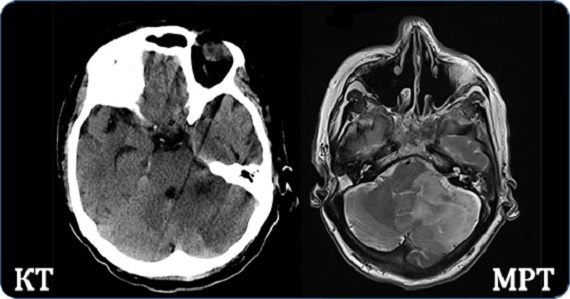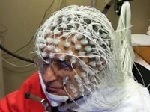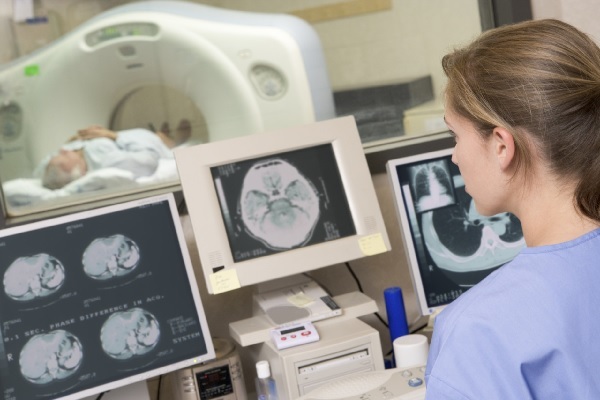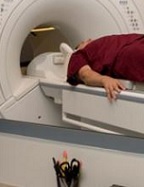What is the difference between CT and MRI
Contents:
- Differences in Diagnostic Surveys
- When to do CT, and when MRT?
- When CT or MRI can not be performed
 Just a century ago, it was impossible to look inside a person without getting into the body with any tools. Physicians had to expose most of the diagnoses almost at random, based only on clinical manifestations. Soon, X-rays were discovered, which greatly simplified the diagnosis of many pathologies. But the x-ray could not give a full picture of what was happening in the body, as it showed the intestines only in a two-dimensional projection: the organs were "superimposed" one on the other, and it was difficult to make out what was what.
Just a century ago, it was impossible to look inside a person without getting into the body with any tools. Physicians had to expose most of the diagnoses almost at random, based only on clinical manifestations. Soon, X-rays were discovered, which greatly simplified the diagnosis of many pathologies. But the x-ray could not give a full picture of what was happening in the body, as it showed the intestines only in a two-dimensional projection: the organs were "superimposed" one on the other, and it was difficult to make out what was what.
These difficulties have prompted scientists to look for other ways. Thus, computer and magnetic resonance imaging were invented. These methods of research have many advantages over radiography, they are increasingly used in modern medicine. To determine when to choose which method, you need to know what is the difference between CT and MRI.In some cases, you can do only with computed tomography, and sometimes it is better to use MRI to obtain reliable information.
Differences in
diagnostic examinations Magnetic resonance imaging is a survey that allows you to obtain volumetric images. This result is achieved by passing electromagnetic waves through the body. Different tissues react to the passage of waves in different ways, these responses are recorded by a special device, transformed into a three-dimensional image. Then the image is displayed on the computer screen or printed on a special material.
To understand what a computed tomography is, you need to know how radiography works. Because X-rays are also used during CT.But unlike the usual X-ray, which makes it possible to see the insides in a two-dimensional image, the CT produces a three-dimensional image. This is due to the device of the tomograph: rays are fed from all sides. The subject lies on the table inside the apparatus. During the examination, doctors receive images that are processed on the computer.
 How to recognize diffuse disorders of brain BEA with EEG.
How to recognize diffuse disorders of brain BEA with EEG.
How to evaluate cerebral blood flow using dopplerography of cerebral vessels and neck to patients.
Such diagnostic methods allow each organ to be examined layer by layer, which is especially important during the determination of the location of the brain tumor. So what is the difference between MRI and computed tomography? Some pathologies are better visualized under the influence of X-rays, and for the diagnosis of others, the use of electromagnetic waves will be more acceptable.
 It is believed that the use of CT is not always justified, since irradiation occurs. However, the problem is helped to solve the SCT.To understand what is spiral computed tomography( CT), you need to imagine a conventional tomograph whose movements will differ from the standard ones. The ring itself rotates around the patient, and the couch constantly makes translational movements inside the apparatus. Such a technique allows to substantially reduce the time of X-ray action on the patient's body.
It is believed that the use of CT is not always justified, since irradiation occurs. However, the problem is helped to solve the SCT.To understand what is spiral computed tomography( CT), you need to imagine a conventional tomograph whose movements will differ from the standard ones. The ring itself rotates around the patient, and the couch constantly makes translational movements inside the apparatus. Such a technique allows to substantially reduce the time of X-ray action on the patient's body.
When to do CT scan, and when is MRI?
Choosing which is best for diagnosis: MRI or computed tomography, depends on the purpose of the survey. The use of X-rays is justified in the following cases:
- examination of the brain for damage;
- diagnosis of vascular diseases( aneurysms, atherosclerotic changes);
- examination of organs that make up the human genitourinary system( kidneys, ureters, bladder, urethra);
- a study of the chest organs makes it easy to diagnose tuberculosis, pneumonia, and other diseases of the lower respiratory tract;
- diagnosis of pathology in the hollow organs( intestines, gallbladder, stomach);
- examination of teeth, bone tissue;
- finding of joint damage;
- diagnosis after trauma, the detection of hidden, but fresh bleeding;
- examination of the spinal column allows you to see osteoporosis, scoliotic changes, hernia.
Computer tomography can detect cysts, tumors, and stones. The anatomical features of internal organs, their damage are also diagnosed. For more complete information in some cases, the examination is performed using X-ray contrast substances( see Angiography).
 Find out what duplex scanning of the vessels of the head and neck is and when the examination is prescribed.
Find out what duplex scanning of the vessels of the head and neck is and when the examination is prescribed.
Indications for Neurosonography of the newborn and the procedure for the examination.
What myths about the harm of MRI for health prevent you from deciding to be screened?
Magnetic resonance imaging is used in cases where it is necessary to examine in detail the soft tissues of the body, joints or cardiovascular system:
- soft tissue tumor;
- examination of muscles, ligaments;
- examination of patients who underwent ischemia of the brain region( stroke);
- study of meninges, nerves.
CT is most often prescribed for the diagnosis of injuries to internal organs, during bleeding, as well as for examining the condition of internal organs. By MRT resort then, the code needs to determine the location of the tumor process in the body or conduct a follow-up examination during treatment to identify various inflammations, hernias, abscesses.
When CT or MRI can not be performed
Only a specialist radiologist can decide how often a CT scan can be done. To do this, he needs data on all radiographic examination methods that have been carried out to the patient during the past year. The doctor will calculate the radiation load and determine the feasibility of CT.
In addition, this procedure is not recommended for pregnant women, as well as people suffering from diabetes, kidney failure or thyroid pathologies.
Contraindication to MRI is the presence in the body of metal or electrical appliances( prostheses, pacemakers, tattoos).This method is allowed for use by pregnant women, but it is recommended to abstain from it in the first three months of bearing a child. People suffering from claustrophobia are offered an MRI method in open-type devices.
Both methods have pros and cons. Decide what will be better: MRI or computed tomography - only a specialist can. Since it is necessary to consider the purpose of the study, the state of the patient's condition, whether such a diagnosis has already been made.
write the question in the form below:



